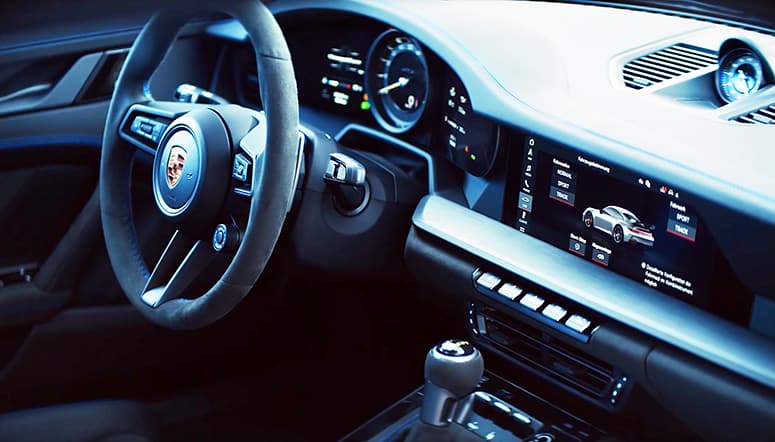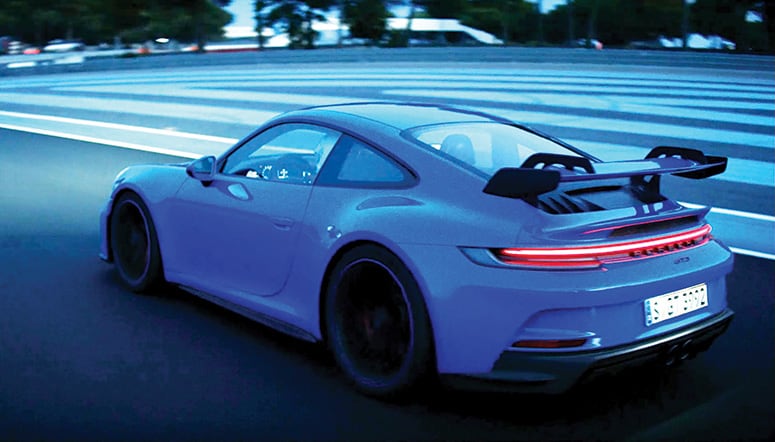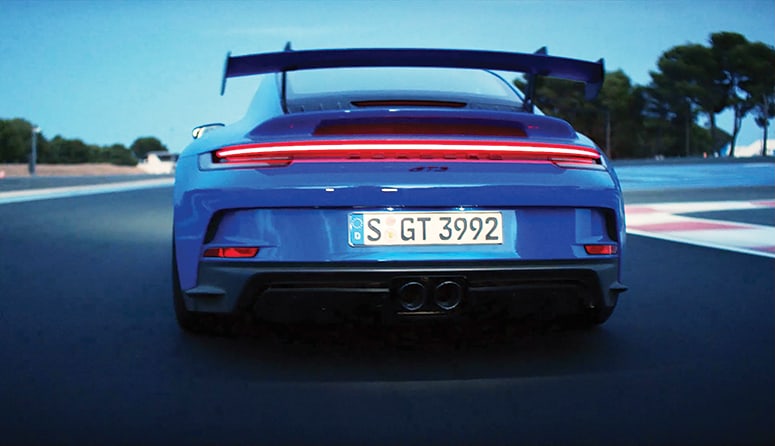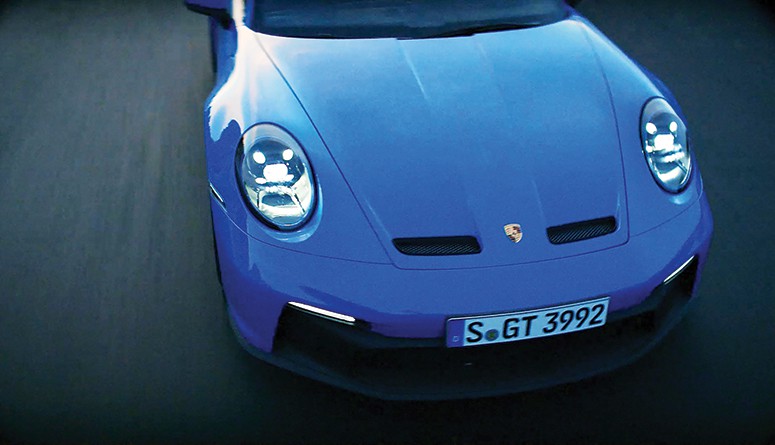In racing, the difference between winning and losing can be a thousandth of a second. When a car company creates a new race-ready car, they’re usually jumping for joy when the new car is faster than the old car by two seconds per lap.
Are you sitting down? Yes? Then get this: The all-new Porsche 911 GT3, Stuttgart’s race-ready yet street-legal car, is faster than its predecessor around Germany’s legendary Nurburging circuit by a whopping 17 seconds—despite having only 10 more horsepower.
The 911 GT3 is the first production model with a naturally aspirated engine to break the seven-minute Nurburgring mark as Porsche development driver Lars Kern clocked a time of six minutes 59.927 seconds for a full 20.8-kilometer lap. The shorter 20.6-kilometer track, which had previously served as a benchmark, was completed by the 911 GT3 in six minutes 55.2 seconds. Running on the optional Michelin Pilot Sport Cup 2 R tires, the new model delivered consistent performance over several laps in the expert hands of Porsche brand ambassador Jörg Bergmeister, who referred to the new 911 GT3 as “by far the best production car“ that he has ever driven in the “Green Hell.“

The new fifth-generation 911 GT3 was developed in close collaboration with Porsche Motorsport, which transferred pure racing technology into a production model even more consistently than ever before.
The new 911 GT3 boasts of an all-new double wishbone front axle layout and sophisticated aerodynamics, thanks to a swan neck rear wing and a striking diffuser that originate from the 911 RSR GT race car. The sports car is powered by the 510ps/470Nm, 4.0-liter, six-cylinder boxer engine that’s based on the powerplant of the 911 GT3 R (and which is also used virtually unchanged in the new 911 GT3 Cup). All these combine to make a high-performance driving machine that is efficient, emotional and precise—perfect for the circuit yet superb for everyday use.

And everyday usability is precisely what makes Porsche unique in the world of supercars. Three years ago, I drove a 911 GT3 for close to four hours around city streets, suburban roads, and of course, the autobahns of Munich and its neighboring provincial cities. It was wonderfully docile and surprisingly comfortable in the city, yet eagerly transformed into a wickedly fast red missile on the autobahn.
With a top speed of 320 km/h (318 km/h with PDK), it is even faster than the previous 911 GT3 RS. It accelerates from zero to 100 km/h in 3.4 seconds. Porsche also offers the new model with a six-speed manual transmission for a particularly pure driving experience.
Much of the improvement from the Nurburgring lap times can be credited to the 911 GT3’s sophisticated aerodynamics, which benefit from the experiences gained by Porsche from motor racing, and generate significantly more downforce without noticeably affecting drag coefficient. In the performance position, the manually set wing and diffuser elements increase the aerodynamic pressure for high cornering speeds. However, this is strictly reserved for the racetrack.

Despite a wider body, larger wheels and additional technical features, the new 911 GT3 weighs the same as its predecessor. When fitted with a manual gearbox the car weighs 1,418 kg, and 1,435 kg when equipped with PDK. The car’s hood is made from carbon fiber-reinforced plastic (CFRP), lightweight glass windows, optimized brake discs, and forged light-alloy wheels to reduce weight. The sports exhaust system is lighter by around 10 kg.
All the details of the new 911 GT3 express its racing genes. The cockpit, in line with the current model generation, features a new track screen. At the touch of a button, the digital displays flanking the central rev counter show information such as tire pressure, oil pressure, oil temperature, fuel tank level and water temperature—all essential when driving on the circuit. The displays also include a visual shift assistant with colored bars and a shift light derived from Porsche Motorsport.
Because customers are increasingly requesting customized equipment, particularly for Porsche GT models, the Porsche Exclusive Manufaktur range is available to the new 911 GT3. The items are supplemented by GT 3-specific options, such as a lightweight roof made of exposed carbon fiber. Other highlights include exterior mirror tops made of carbon, darkened LED matrix main headlights, and matching Exclusive design rear lights. The black alloy wheels are adorned by Guards Red or Shark Blue rings. In the cabin, the rev counter dial and Sport Chrono stopwatch dials, seatbelts, and trim strips can be finished in body color or other desired hues.

As exclusive as the new 911 GT3 itself is the individual chronograph watch that Porsche Design offers solely to customers of the high-performance sports car. The Porsche Design chronograph is defined by a dynamic design, consistent performance and high-quality workmanship. Its housing reflects its Porsche Motorsport genes. Just like the connecting rods of the GT3 engine, the watch features robust, lightweight titanium. The timepiece is powered by a winding rotor that evokes the wheels of the 911 GT3. The colored ring of its dial can be customized in the paint colors of the 911 GT3.
The first 911 GT3 was launched in 1999. Based on the 996 model series, its 3.6-liter engine generated 360ps. With Walter Rohrl behind the wheel, the original 911 GT3 became the first road-going sports car to lap the Nürburgring in under eight minutes. The second GT3 generation followed in 2006. It was based on the 911 Type 997 and debuted with 415ps. In 2013, the third-gen model initially launched with a 3.8-liter, 475ps engine. Two years later, that engine increased to 4.0 liters, delivering 500ps.
Customer deliveries of the new 911 GT3 for principal markets will begin this May 2021.

